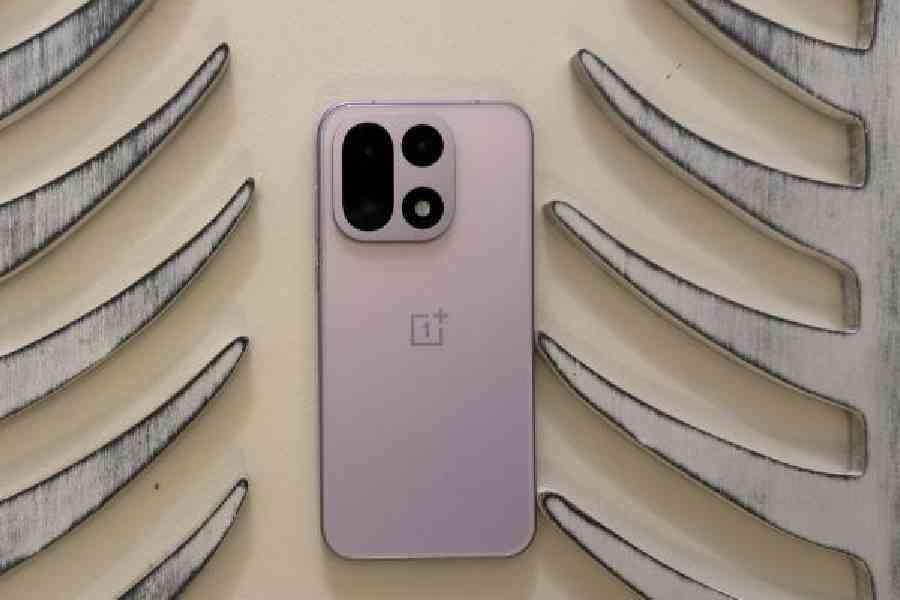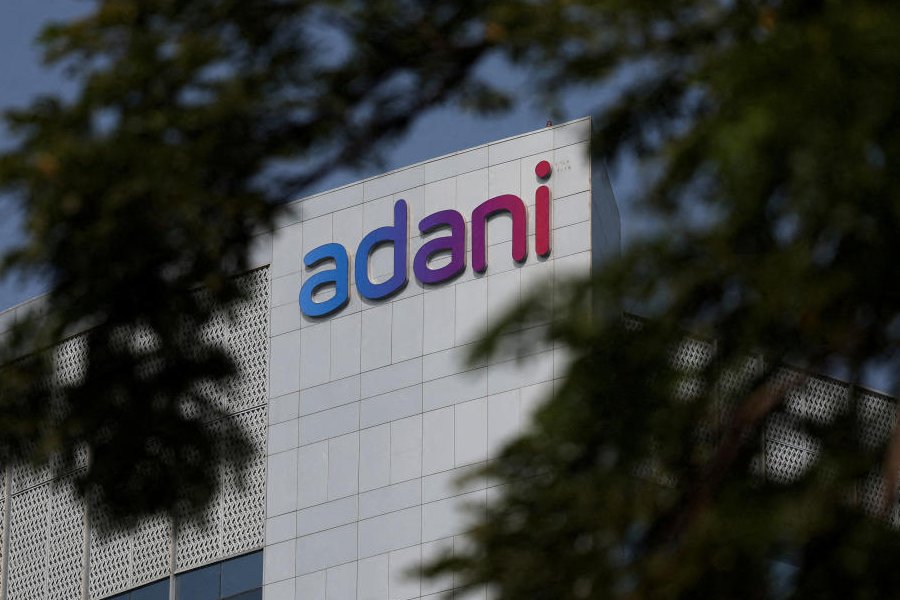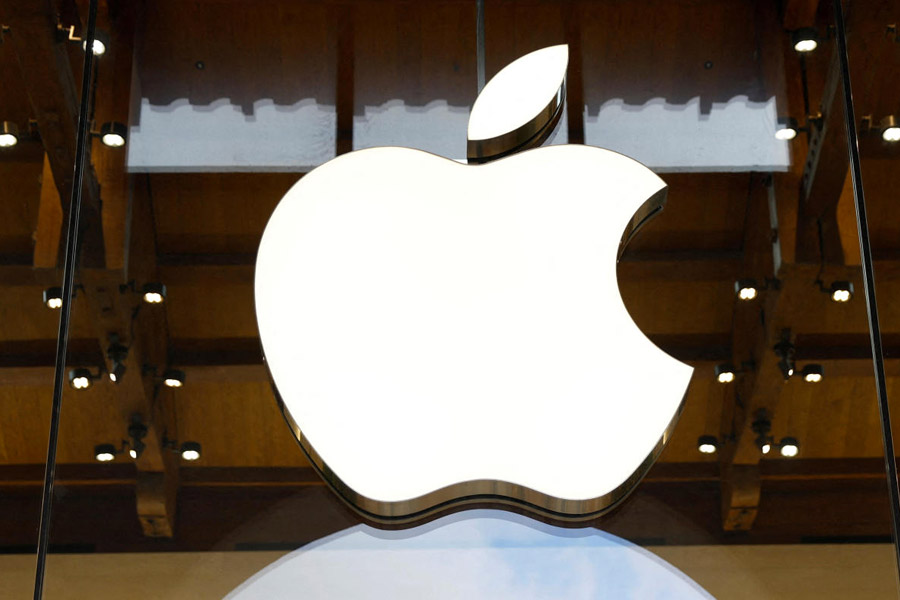At the end of the second full day of use on a single charge, the OnePlus 15 still had miles to go before it needed to be plugged into the wall socket. The new phone is both a looker and a slogger.
You get a triple-camera setup with the DetailMax engine, a 7,300 mAh battery and the Snapdragon 8 Elite Gen 5 chipset. There’s also a 165 Hz panel — because who cares about 120 Hz in 2025?
The interface is the smoothest we’ve seen on a smartphone in a long time. Lending power to this department is one of the chips inside the device. That’s not all: You get both IP68 and IP69K protection. You read that right — IP69K. Let’s break that down.
First, ingress protection. It’s rare to come across smartphones with something like IP69K. The ‘K’ signifies that the phone can survive machinery and automotive work. If a product is regularly exposed to high-pressure washing, this is the rating you should look for. It essentially means your phone can endure extreme stress and water tests.
Turn the phone over and, if you’ve been using OnePlus handsets for a few years, you’ll notice the absence of the Hasselblad logo. For some time, the company partnered with Hasselblad to tune colour accuracy on its cameras. Frankly, it did little to elevate the experience — if you truly want the Hasselblad touch, you’ll need one of those costly cameras. But has OnePlus done enough to improve its camera game? More on that later.

Even without the usual Hasselblad partnership, the camera setup offers sharp and bright photographs
Different feel to the phone
OnePlus continues with its square camera-island design and hasn’t offered a Google Pixel-style bar that stretches from one end to the other. It means that if you keep the phone on a table, there’s the familiar wobble when pressing the top-left side. That doesn’t mean the design fails. The handset is just the right size to be gripped comfortably in one hand.
On the Sand Storm colour variant, OnePlus has applied something called Micro-Arc Oxidation technology. The plasma-based electrochemical process creates a ceramic-grade coating on the metal surface. The result is a mid-frame that’s 3.4 times harder than an aluminium one. Ultimately, it feels good to hold and appears sturdy.
Battery refuses to die

The phone can record 4K 120fps video with Dolby Vision HDR
Equally satisfying is the battery performance. There’s a 7,300 mAh silicon NanoStack battery. The secret sauce is the 15 per cent silicon content in the anode, which allows significantly greater energy density.
We managed well over two full days without worrying about charging. For most users, this alone will be the deciding factor. Instead of AI, it’s still battery life that wins our hearts. The battery is also engineered to maintain over 80 per cent of its health after four years of use — meaning you’re less likely to fall prey to the upgrade cycle. With 120 W SuperVOOC technology, the phone can be fully charged in under 40 minutes — despite its large battery.
There’s also 50 W AirVOOC wireless charging, including magnetic charging with a compatible case. For gamers, Bypass Charging helps as the device can draw power directly from the outlet while gaming to minimise heat generation.
What’s that button?

Colours are slightly punchy but mostly free of noise
On the side of the phone is a Plus Key, oddly similar to the Action Button on iPhones. You can programme the key to launch various functions. I’ve set it to open Mind Space, an AI feature that tracks voice memos and other saved items. You can also assign it to Sound & Vibration, Do Not Disturb, Camera, Translate, Flashlight, Recorder or Screenshot. It’s useful — even if clearly inspired by a rival company.
Tri-chip power
Three chips power the device — the Snapdragon 8 Elite Gen 5, G2 Wi-Fi Chip and Touch Response Chip. The Snapdragon chipset is powerful enough to keep the phone nimble for years. We faced no issues running design apps or doing light video editing. The third-generation Qualcomm Oryon CPU reaches 4.6 GHz, offering a 20 per cent performance gain and 35 per cent higher CPU efficiency.
The Adreno GPU brings a 23 per cent boost in graphics and 20 per cent better battery life. There’s support for on-device AI processing. A 37 per cent faster Hexagon NPU and the Qualcomm Sensing Hub work together to enable intelligent features that adapt to user behaviour. Equally important is the LPDDR5X Ultra+ RAM running at 10,667 Mbps in the 16 GB variant.
The Touch Response Chip enhances the 165 Hz display refresh rate. The 6.78-inch 1.5K LTPO panel delivers fluid visuals and is especially helpful for demanding games. Users get a touch-sampling rate of 3,200 Hz — higher than the 1,440 to 2,400 Hz typical of other flagships. Beyond speed, brightness peaks at 1,800 nits and drops to 0.5 nits when Reduce White Point is enabled.
Camera minus Hasselblad branding
There are three cameras on the rear — 50 MP each for the main, ultra-wide and telephoto lenses. The front camera is 32 MP.
OnePlus says the camera’s magic lies in its DetailMax Engine. By fusing multiple 12 MP frames for wide dynamic range with a 50 MP frame for high resolution, it produces a final 26 MP image that retains clarity and texture.
There’s no issue with sharpness or brightness, though colours receive a gentle lift. Over the past few days, in a colour-rich setting, hues have appeared slightly boosted — as they did during the Hasselblad partnership. So while the collaboration is gone, the camera department has done well, though there’s still room for finer tuning.
More impressive is its ability to record 4K 120 fps video with Dolby Vision HDR, which offers rich colour depth and smooth slow-motion footage. There’s also support for Log video recording and a live LUT preview — meaning you see colour-graded footage in real time instead of the usual greyish Log feed. Good move, OnePlus.
Make the call
There are some AI features but, as with most brands, we’re still a long way from finding compelling use cases. Plus Mind on OnePlus 15 helps organise screenshots and create digital memories. Gemini is present too. But these AI functions alone won’t drive purchase decisions. Even without them, OnePlus has clearly set a new benchmark for what defines a flagship worth buying.
Will it stop people from picking the Samsung Galaxy S25? Probably not — Samsung’s SmartThings ecosystem still binds multiple devices seamlessly.
But OnePlus undoubtedly has a winner on its hands. It’s refreshing to see the company deliver a no-nonsense, powerful flagship — whatever your relationship with AI technology.
At a glance
Device: OnePlus 15
High notes
l Excellent two to three days of battery life
l Powerful Snapdragon 8 Elite Gen 5 chipset
l Smooth 165Hz display
l IP68 and IP69K protection
l 4K 120fps Dolby Vision HDR video recording
l Programmable Plus Key for quick actions
l Balanced size and premium design
Muffled notes
l Camera output offers colours that are punchy
l AI solutions are still looking for a problem










